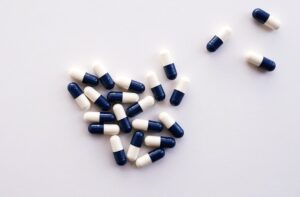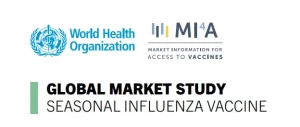MIT: Potent New Strategies Enhancing COVID-19 RNA Vaccines
- Why Lecanemab’s Adoption Faces an Uphill Battle in US?
- Yogurt and High LDL Cholesterol: Can You Still Enjoy It?
- WHO Releases Global Influenza Vaccine Market Study in 2024
- HIV Infections Linked to Unlicensed Spa’s Vampire Facial Treatments
- A Single US$2.15-Million Injection to Block 90% of Cancer Cell Formation
- WIV: Prevention of New Disease X and Investigation of the Origin of COVID-19
MIT: Potent New Strategies Enhancing COVID-19 RNA Vaccines
- Red Yeast Rice Scare Grips Japan: Over 114 Hospitalized and 5 Deaths
- Long COVID Brain Fog: Blood-Brain Barrier Damage and Persistent Inflammation
- FDA has mandated a top-level black box warning for all marketed CAR-T therapies
- Can people with high blood pressure eat peanuts?
- What is the difference between dopamine and dobutamine?
- How long can the patient live after heart stent surgery?
MIT: Potent New Strategies Enhancing COVID-19 RNA Vaccines.
RNA vaccines targeting COVID-19 have proven effective in reducing the severity of the disease.
However, a team of scientists at the Massachusetts Institute of Technology (MIT) is striving to make them even better.
By fine-tuning the vaccine’s design, researchers have discovered that they can generate COVID-19 RNA vaccines that elicit a stronger immune response in mice at lower doses.
Adjuvants, molecules commonly used to enhance vaccine immune responses, have not been utilized in RNA vaccines before.
In this study, MIT researchers designed nanoparticles and the antigens for delivering COVID-19 antigens, bolstering the immune response without the need for separate adjuvants.

Potential Benefits and Novel Approaches
If developed further for human use, this type of RNA vaccine could potentially lower costs, reduce required doses, and offer longer-lasting immunity. Tests conducted by researchers also suggest that nasal administration of the vaccine can induce a robust immune response compared to traditional intramuscular injections.
Daniel Anderson, a professor in the Department of Chemical Engineering at MIT, a member of the Koch Institute for Integrative Cancer Research at MIT, and the Institute for Medical Engineering and Science (IMES), and a senior author of the study, stated, “With nasal delivery of the vaccine, you might be able to kill COVID-19 at the mucosal site before it enters the body. Nasal vaccines may also be more accessible to many people as they do not require injections.”
Researchers believe that by incorporating similar immune-stimulating properties, the effectiveness of other types of RNA vaccines currently under development, including cancer vaccines, could also be improved.
The lead authors of this new study are former MIT postdoctoral fellow Bo Wen Li (now an Assistant Professor at the University of Toronto), graduate student Allen Jiang, and former MIT postdoctoral fellow Idris Raji, who previously served as a researcher at Boston Children’s Hospital. The research findings were published on September 7th in the journal “Nature Biomedical Engineering.” The research team also includes MIT professors from the David H. Koch Institute, Robert Langer, and several other MIT researchers.
Enhancing Immunity
RNA vaccines consist of RNA chains encoding viral or bacterial proteins, known as antigens. In COVID-19 vaccines, this RNA encodes a segment of the virus’s spike protein. This RNA chain is encapsulated in lipid nanoparticles, protecting the RNA from degradation in the body and aiding its entry into cells.
While the COVID-19 RNA vaccines developed by Moderna and Pfizer/BioNTech initially sparked strong immune responses, the MIT research team sought to engineer them to have immune-stimulating properties that make them even more effective.
Research Details and Immune Enhancement
In this study, researchers employed two different strategies to enhance the immune response. In the first strategy, researchers focused on a protein called C3d, which is part of the immune response arm known as the complement system. These proteins help the body defend against infections, with C3d’s role being to bind to antigens and enhance antibody responses to them. Scientists have been evaluating how to use C3d as a molecular adjuvant in protein-based vaccines like the DTP (diphtheria, tetanus, and pertussis) vaccine for years.
Jiang explained, “With the application of mRNA technology in COVID-19 vaccines, we thought this would be an excellent opportunity to see if C3d could also act as an adjuvant in mRNA vaccine systems.”
To do this, researchers designed mRNA to code for a fusion of C3d with the antigen, allowing the receiving cells to produce both components as a single protein.
In the second phase of the strategy, researchers improved the lipid nanoparticles used to deliver the RNA vaccine, making them inherently more immune-stimulating in addition to aiding RNA delivery.
To identify the most effective lipid, researchers created a library of 480 different chemical types of lipid nanoparticles. All of these were “ionizable” lipids, meaning they carry a positive charge when they enter an acidic environment. The original COVID-19 RNA vaccine also included some ionizable lipids because they help the nanoparticles self-assemble with RNA and facilitate uptake by target cells.
“We knew that nanoparticles themselves could be immunostimulatory, but we didn’t have a good sense of what chemical components would be required to optimize this reaction,” Anderson said. “So, instead of trying to make a perfect nanoparticle, we created a library of nanoparticles and evaluated them, discovering some chemical components that seemed to enhance the response.”
Developing Nasal Vaccines
Researchers tested their new vaccine in mice, which included RNA encoding C3d and the best-performing ionizable lipid identified from the library. They found that mice injected with this vaccine produced antibodies ten times higher than those not injected with the COVID-19 RNA vaccine. The new vaccine also elicited a stronger response in T cells, which play a crucial role in combating the SARS-CoV-2 virus.
Li stated, “By engineering both the RNA and its delivery vehicle, we have demonstrated for the first time a synergistic enhancement of the immune response. Given the challenges posed by the mucosal barrier in the upper respiratory tract, this prompted us to explore the feasibility of nasal administration for this novel RNA vaccine platform.”
When researchers administered the vaccine nasally, they observed a similarly robust immune response in mice. If a nasal vaccine for human use is developed, it could generate immune responses within the nasal and lung mucosal tissues, potentially enhancing protection against infection.
Researchers suggest that because self-adjuvanting vaccines can elicit strong responses at lower doses, this approach may also help reduce the cost of vaccines, making them more accessible, particularly in developing countries.
Anderson’s lab is currently exploring whether this self-adjuvanting platform can also help enhance immune responses for other types of RNA vaccines, including cancer vaccines. Researchers also plan to collaborate with healthcare companies to test the effectiveness and safety of these new vaccine formulations in larger animal models, with the hope of eventually conducting human trials.
MIT: Potent New Strategies Enhancing COVID-19 RNA Vaccines.
(source:internet, reference only)
Disclaimer of medicaltrend.org
Important Note: The information provided is for informational purposes only and should not be considered as medical advice.



